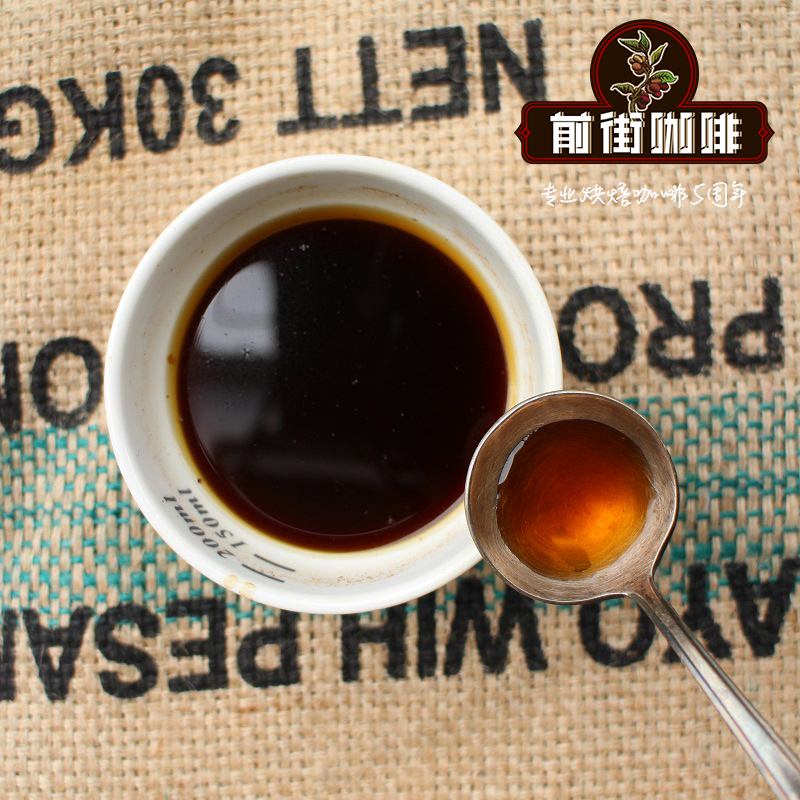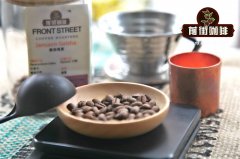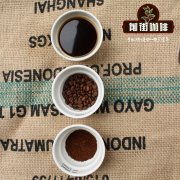A brief introduction to what kind of coffee is produced in Ethiopia in South Xibao, Ethiopia.

Professional coffee knowledge exchange more coffee bean information please follow the coffee workshop (Wechat official account cafe_style)
Nensebo is a small area in Ethiopia's Oromia, with valleys accounting for 70 per cent of the area, while the remaining areas are drylands and plateaus, with only 4.6 per cent of natural drinking water. Coffee is an important commercial crop, with a planting area of more than 5,000 hectares. The total output in a year is about ten containers. "
Every day, about 800 farmers transport coffee and cherries to the processing plant. Most of the coffee beans are organic coffee and are grown using organic fertilizers. A coffee tree produces no more than 200g of coffee beans, and farmers usually have less than 1500 coffee trees per hectare.
Due to the climate and environment of Ethiopia, its coffee producing areas are mainly concentrated in the western and southern states of Gambera, Oromia and southern ethnic states.
YirgaCheffe is a small town in eastern Ethiopia, located in the ethnic states in the south, Sidamo to the north and southwest, and Guji to the southeast, 1700m to 2100m above sea level. It belongs to the pastoral coffee planting system.
Yejia Xuefei is a small town in Sidamo province. The ancient saying "Yirga" means "settle down" and "Cheffe" means "wetlands". It is very popular in the world boutique coffee circle because of its unique jasmine fragrance and citrus acid. With the rise of boutique coffee, coffee in this region has become synonymous with Ethiopian boutique beans.
As a result of its growing popularity, Ethiopian officials classify nearby coffee with similar flavors as Yega Sheffield, which is separate from the Sidamo region and belongs to various ethnic states in the new administrative region. At first, Yejia Xuefei's coffee trees were planted by European monks, and later by farmers or cooperatives. Yejia Xuefei is actually constructed by the surrounding coffee community or cooperative.
Coffee trees are mostly planted in farmers' own backyard or mixed with other crops in the field, and the yield per household is not much, which is a typical rural coffee. Yejia Xuefei award-winning beans almost come from the above-mentioned coffee villages and communities. According to the official Ethiopian ECX system, according to the flavor quality Q-grade, there are 8 Woreda (townships) in Yegashafi production area, which are Dilla, Wenago, Bule, Yirgacheffe, Kochere, Jetipp Gedeb and Gelena, Abaya.
Flavor description:
Dry aromas of strawberries, blueberries, oranges and flowers.
Sweet grapes, blueberries and purple berries on the palate
Accompanied by orange peel, bergamot, black tea and flower aromas, the texture is smooth and full, sweet and juicy.
Important Notice :
前街咖啡 FrontStreet Coffee has moved to new addredd:
FrontStreet Coffee Address: 315,Donghua East Road,GuangZhou
Tel:020 38364473
- Prev

Best Brazilian Coffee Essex Coffee Flavor Coffee taste Yega Chuefei Charan Coffee
Professional coffee knowledge exchange more coffee bean information please follow the coffee workshop (Wechat official account cafe_style) Ethiopia is the kingdom of coffee, here is coffee paradise, there are thousands of coffee varieties, countless varieties of coffee are named, and those who have a general understanding of coffee history all know that Ethiopia is not only the birthplace of coffee, but also the saint in the eyes of bean hunters.
- Next

What kind of coffee can Ethiopia buy? Ethiopian narcissus coffee bean flavor.
Professional coffee knowledge exchange more coffee bean information please pay attention to the coffee workshop (Wechat official account cafe_style) dry strong floral aroma, hot water injected after the cup test was shocked by this multi-level and refreshing flavor, such refreshing and elegant coffee, unexpectedly as chewing petals to drink fruit tea as charming, and each temperature presents a different fruit tone, even the tail rhyme is very fresh
Related
- Detailed explanation of Jadeite planting Land in Panamanian Jadeite Manor introduction to the grading system of Jadeite competitive bidding, Red bid, Green bid and Rose Summer
- Story of Coffee planting in Brenka region of Costa Rica Stonehenge Manor anaerobic heavy honey treatment of flavor mouth
- What's on the barrel of Blue Mountain Coffee beans?
- Can American coffee also pull flowers? How to use hot American style to pull out a good-looking pattern?
- Can you make a cold extract with coffee beans? What is the right proportion for cold-extracted coffee formula?
- Indonesian PWN Gold Mandrine Coffee Origin Features Flavor How to Chong? Mandolin coffee is American.
- A brief introduction to the flavor characteristics of Brazilian yellow bourbon coffee beans
- What is the effect of different water quality on the flavor of cold-extracted coffee? What kind of water is best for brewing coffee?
- Why do you think of Rose Summer whenever you mention Panamanian coffee?
- Introduction to the characteristics of authentic blue mountain coffee bean producing areas? What is the CIB Coffee Authority in Jamaica?

